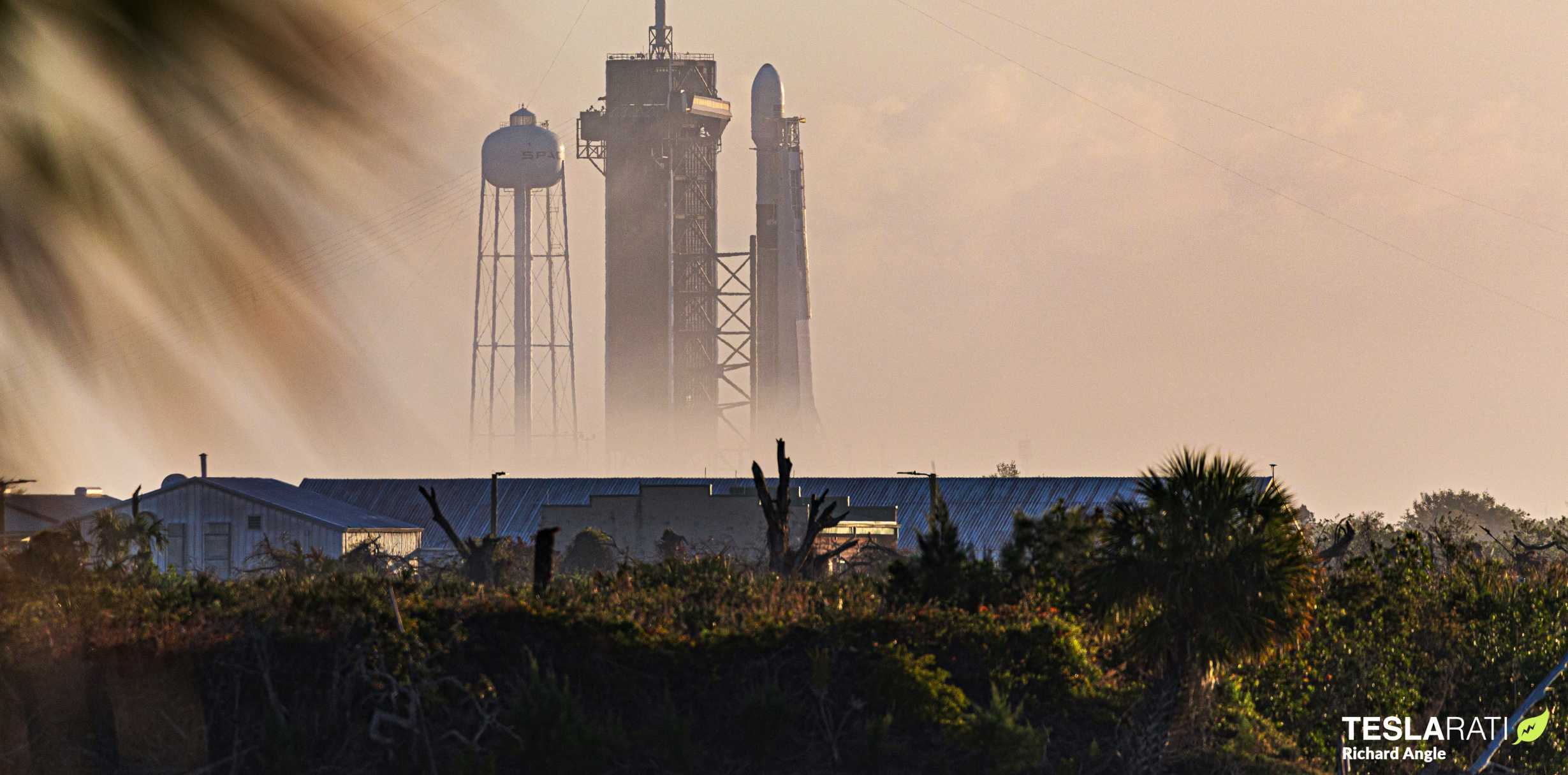
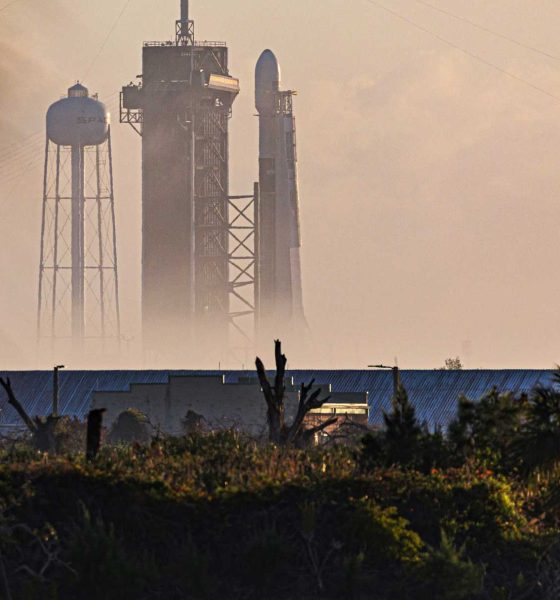
News
SpaceX rocket ready for second reusability record, Starlink launch attempt
One of SpaceX’s first upgraded Falcon 9 Block 5 boosters is ready for its second attempt to set a reusability record after its March 15th Starlink launch attempt aborted at the very last second.
Now scheduled to send SpaceX’s sixth batch of 60 Starlink satellites into orbit no earlier than (NET) 8:16 am EDT (12:16 UTC), March 18th, the mission will be Falcon 9 booster B1048’s fifth. Just four months ago, the booster successfully launched the first 60 upgraded Starlink v1.0 satellites, also becoming the second SpaceX rocket to fly four times. While B1049 – B1048’s predecessor – was first to reach the four-flight milestone in May 2019, B1048 is now on track to take the next leap forward for Falcon 9 reusability.
First noted shortly after the abort on SpaceX’s March 15th launch webcast, the company later clarified that what could have been attributed to hardware failure was likely just an issue with software or sensors. Milliseconds before liftoff, Falcon 9’s autonomous flight computer seemingly didn’t like what it saw while interpreting the telemetry flowing in from the ignition of B1048’s nine Merlin 1D engines. Whatever the specific trouble, Falcon 9 believed that one or several of those Merlin 1D engines were producing more thrust than they should.
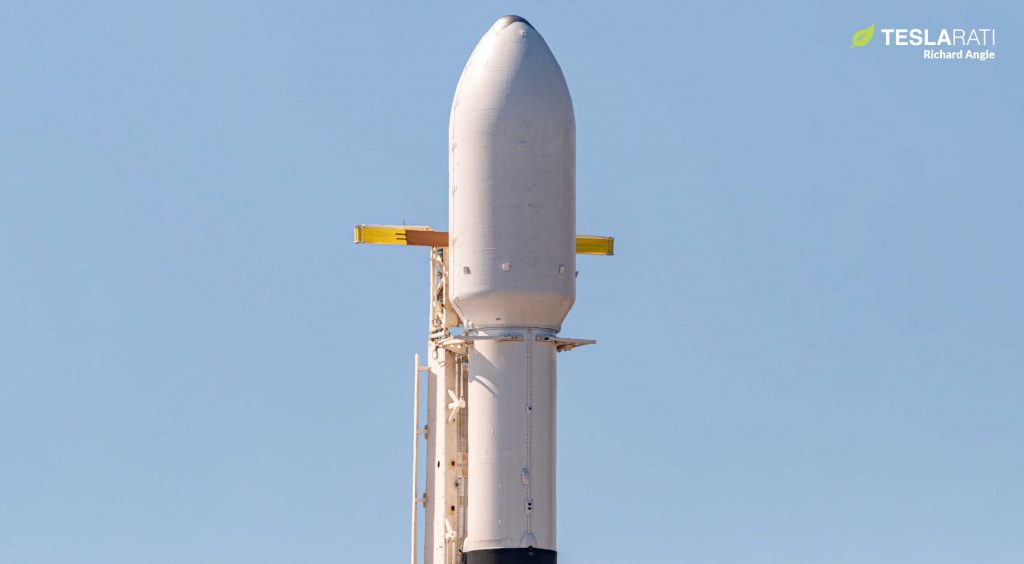
While likely oversimplifying what is a spectacularly complex logic system, the flight computers that control Falcon launch vehicles from T-1 minute to mission completion have to treat the messy uncertainty of reality through a black and white lens. Lacking the ability to heuristically interpret the data they process, the computers instead rely on algorithms that filter thousands of channels of telemetry into a handful of simple categories. If that data aligns with the computer’s expectations, things are okay. If the data doesn’t agree with the plan, things are not okay. There are, of course, many more levels of complexity, but the concept of operations remains mostly the same.
However, the telemetry itself is also a potential point of failure – bad data could lead the flight computer astray, concluding that things are okay when they aren’t or vice versa. To handle that potential failure mode, SpaceX relies on multiple strings of telemetry (and even multiple computers), all gathering and analyzing the same things simultaneously. If one of several redundant sensors starts to disagree with its brethren, reporting different data back to Falcon 9’s flight computers, it’s apparent that the sensor – not the thing it’s measuring – is likely at fault. Still, out of an abundance of caution, SpaceX avionics typically treat most “out-of-family” sensor readings as reason enough to delay or fully abort a launch. When a launch delay can be little more than an annoyance with a negligible cost, it’s almost universally better to be safe than sorry.
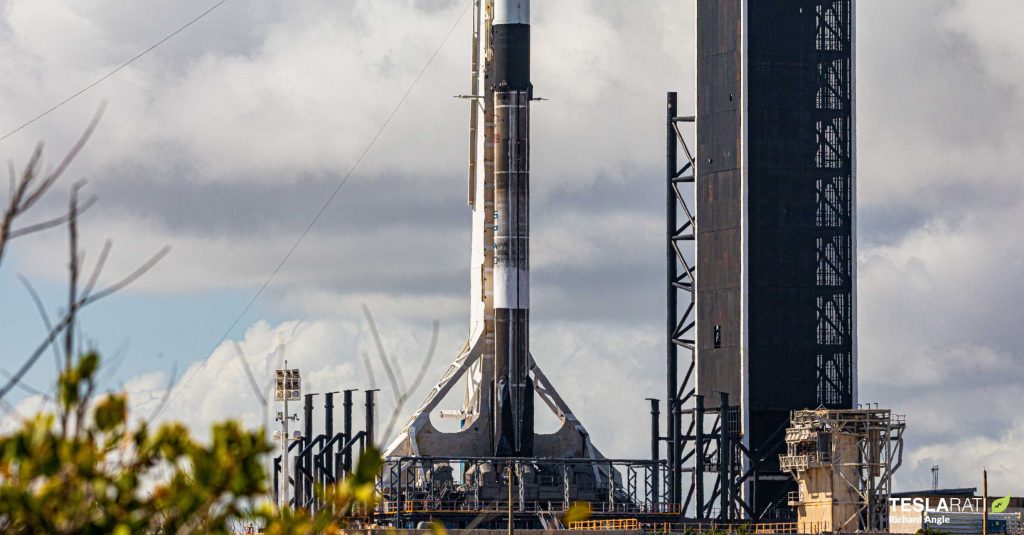
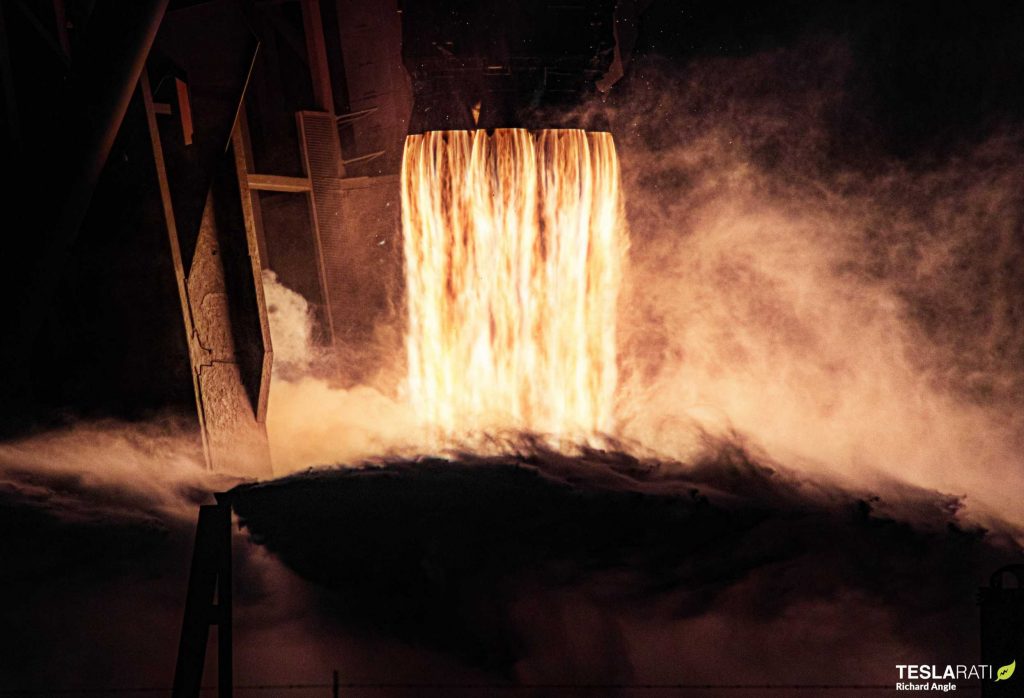
With Falcon 9 B1048’s March 15th false start, the rocket’s computer appears to have received conflicting readings from the same family (or families) of engine thrust sensors. While, as noted above, the fault almost certainly lay in an engine sensor or two and not in the engines themselves, the flight computer chose caution over expedience and halted the launch milliseconds before it would have otherwise commanded clamp release and lifted off.
Confirmed by SpaceX delaying the Starlink V1 L5 mission by just three days, the issue was almost certainly software or sensor-related. Given that SpaceX continues to push the envelope of launch vehicle reusability, it’s honestly more surprising that aborts like these aren’t more common. Instead, the reality is that Falcon 9 Block 5 – aside from delays from the occasional upper stage fault – almost never suffers hardware-related aborts when compared to the rocket’s prior iterations.
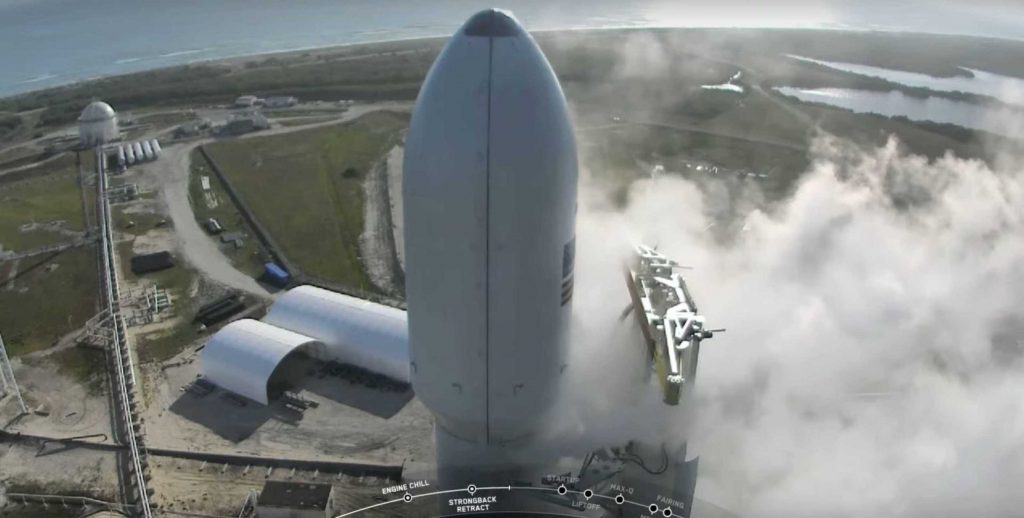

Featuring the second-ever flight-proven Falcon payload fairing, Falcon 9 B1048 will hopefully become the first SpaceX rocket to complete five orbital-class launches and landings. With more than a little luck, there’s also a smaller chance that the mission could mark the first time SpaceX successfully catches both fairing halves with twin ships Ms. Tree and Ms. Chief.
Tune in for SpaceX’s second Starlink V1 L5 launch attempt around 8am EDT (12:00 UTC) to catch the potentially record-breaking launch and landing live.
Check out Teslarati’s Marketplace! We offer Tesla accessories, including for the Tesla Cybertruck and Tesla Model 3.

News
Tesla is not sparing any expense in ensuring the Cybercab is safe
Images shared by the longtime watcher showed 16 Cybercab prototypes parked near Giga Texas’ dedicated crash test facility.

The Tesla Cybercab could very well be the safest taxi on the road when it is released and deployed for public use. This was, at least, hinted at by the intensive safety tests that Tesla seems to be putting the autonomous two-seater through at its Giga Texas crash test facility.
Intensive crash tests
As per recent images from longtime Giga Texas watcher and drone operator Joe Tegtmeyer, Tesla seems to be very busy crash testing Cybercab units. Images shared by the longtime watcher showed 16 Cybercab prototypes parked near Giga Texas’ dedicated crash test facility just before the holidays.
Tegtmeyer’s aerial photos showed the prototypes clustered outside the factory’s testing building. Some uncovered Cybercabs showed notable damage and one even had its airbags engaged. With Cybercab production expected to start in about 130 days, it appears that Tesla is very busy ensuring that its autonomous two-seater ends up becoming the safest taxi on public roads.
Prioritizing safety
With no human driver controls, the Cybercab demands exceptional active and passive safety systems to protect occupants in any scenario. Considering Tesla’s reputation, it is then understandable that the company seems to be sparing no expense in ensuring that the Cybercab is as safe as possible.
Tesla’s focus on safety was recently highlighted when the Cybertruck achieved a Top Safety Pick+ rating from the Insurance Institute for Highway Safety (IIHS). This was a notable victory for the Cybertruck as critics have long claimed that the vehicle will be one of, if not the, most unsafe truck on the road due to its appearance. The vehicle’s Top Safety Pick+ rating, if any, simply proved that Tesla never neglects to make its cars as safe as possible, and that definitely includes the Cybercab.
Elon Musk
Tesla’s Elon Musk gives timeframe for FSD’s release in UAE
Provided that Musk’s timeframe proves accurate, FSD would be able to start saturating the Middle East, starting with the UAE, next year.

Tesla CEO Elon Musk stated on Monday that Full Self-Driving (Supervised) could launch in the United Arab Emirates (UAE) as soon as January 2026.
Provided that Musk’s timeframe proves accurate, FSD would be able to start saturating the Middle East, starting with the UAE, next year.
Musk’s estimate
In a post on X, UAE-based political analyst Ahmed Sharif Al Amiri asked Musk when FSD would arrive in the country, quoting an earlier post where the CEO encouraged users to try out FSD for themselves. Musk responded directly to the analyst’s inquiry.
“Hopefully, next month,” Musk wrote. The exchange attracted a lot of attention, with numerous X users sharing their excitement at the idea of FSD being brought to a new country. FSD (Supervised), after all, would likely allow hands-off highway driving, urban navigation, and parking under driver oversight in traffic-heavy cities such as Dubai and Abu Dhabi.
Musk’s comments about FSD’s arrival in the UAE were posted following his visit to the Middle Eastern country. Over the weekend, images were shared online of Musk meeting with UAE Defense Minister, Deputy Prime Minister, and Dubai Crown Prince HH Sheikh Hamdan bin Mohammed. Musk also posted a supportive message about the country, posting “UAE rocks!” on X.
FSD recognition
FSD has been getting quite a lot of support from foreign media outlets. FSD (Supervised) earned high marks from Germany’s largest car magazine, Auto Bild, during a test in Berlin’s challenging urban environment. The demonstration highlighted the system’s ability to handle dense traffic, construction sites, pedestrian crossings, and narrow streets with smooth, confident decision-making.
Journalist Robin Hornig was particularly struck by FSD’s superior perception and tireless attention, stating: “Tesla FSD Supervised sees more than I do. It doesn’t get distracted and never gets tired. I like to think I’m a good driver, but I can’t match this system’s all-around vision. It’s at its best when both work together: my experience and the Tesla’s constant attention.” Only one intervention was needed when the system misread a route, showcasing its maturity while relying on vision-only sensors and over-the-air learning.
News
Tesla quietly flexes FSD’s reliability amid Waymo blackout in San Francisco
“Tesla Robotaxis were unaffected by the SF power outage,” Musk wrote in his post.

Tesla highlighted its Full Self-Driving (Supervised) system’s robustness this week by sharing dashcam footage of a vehicle in FSD navigating pitch-black San Francisco streets during the city’s widespread power outage.
While Waymo’s robotaxis stalled and caused traffic jams, Tesla’s vision-only approach kept operating seamlessly without remote intervention. Elon Musk amplified the clip, highlighting the contrast between the two systems.
Tesla FSD handles total darkness
The @Tesla_AI account posted a video from a Model Y operating on FSD during San Francisco’s blackout. As could be seen in the video, streetlights, traffic signals, and surrounding illumination were completely out, but the vehicle drove confidently and cautiously, just like a proficient human driver.
Musk reposted the clip, adding context to reports of Waymo vehicles struggling in the same conditions. “Tesla Robotaxis were unaffected by the SF power outage,” Musk wrote in his post.
Musk and the Tesla AI team’s posts highlight the idea that FSD operates a lot like any experienced human driver. Since the system does not rely on a variety of sensors and a complicated symphony of factors, vehicles could technically navigate challenging circumstances as they emerge. This definitely seemed to be the case in San Francisco.
Waymo’s blackout struggles
Waymo faced scrutiny after multiple self-driving Jaguar I-PACE taxis stopped functioning during the blackout, blocking lanes, causing traffic jams, and requiring manual retrieval. Videos shared during the power outage showed fleets of Waymo vehicles just stopping in the middle of the road, seemingly confused about what to do when the lights go out.
In a comment, Waymo stated that its vehicles treat nonfunctional signals as four-way stops, but “the sheer scale of the outage led to instances where vehicles remained stationary longer than usual to confirm the state of the affected intersections. This contributed to traffic friction during the height of the congestion.”
A company spokesperson also shared some thoughts about the incidents. “Yesterday’s power outage was a widespread event that caused gridlock across San Francisco, with non-functioning traffic signals and transit disruptions. While the failure of the utility infrastructure was significant, we are committed to ensuring our technology adjusts to traffic flow during such events,” the Waymo spokesperson stated, adding that it is “focused on rapidly integrating the lessons learned from this event, and are committed to earning and maintaining the trust of the communities we serve every day.”








